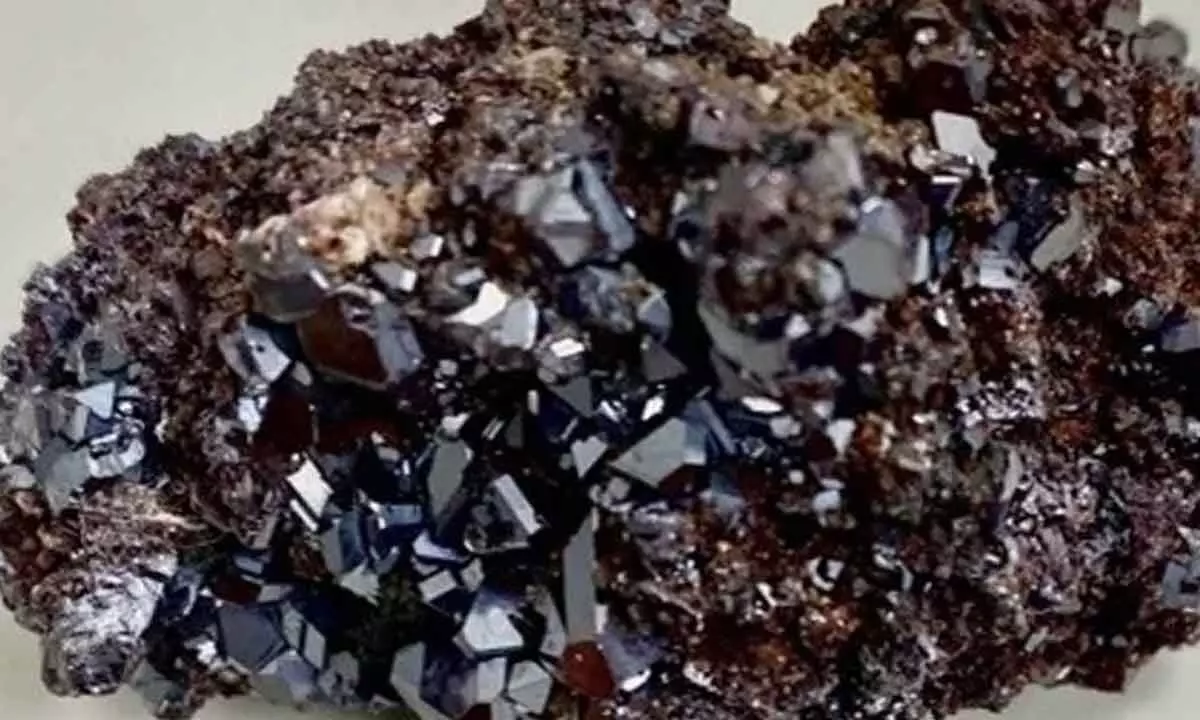Live
- Today’s welfare measures aim to empower: Nirmala Sitharaman
- Six scholars, including two women, win Infosys Prize 2024
- Gurukula zonal level sports meet concludes
- Vagdevi Jr College student selected for national basketball tourney
- Maoist area committee member arrested
- Collectorate staff protest attack on DC
- Villagers urge authorities to continue launch service even after construction of bridge
- MLA Padmavathi launches free lunch for readers
- Police high-handedness sparks outrage in Kodangal
- Khichi elected mayor of Delhi
Just In
Researchers Suggest Key To Unlock Quantum Computers Could Be Found In An Ancient Namibian Stone

Hans News Service | 20 April 2022 9:28 PM IST

x
Cuprous oxide crystal. (University of St Andrews)
Highlights
- Scientists have discovered by achieving the aim through creating the world's largest light-matter hybrid particles.
- The researchers equate light and matter to two sides of the same coin, with polaritons interacting with each other on the matter side.
One method to fully achieve quantum computers' potential is to build them out of both light and matter, as this way, data can be stored and processed while also travelling at the speed of light. Scientists have just moved a step closer and discovered by achieving the aim through creating the world's largest light-matter hybrid particles.
These Rydberg polaritons were created using a chunk of stone that contained cuprous oxide (Cu2O) crystals from an ancient deposit in Namibia. One of the few sites on the planet where cuprous oxide had been discovered in gemstone quality.
The stone's crystal was polished and thinned to less than the diameter of a human hair, then sandwiched between two mirrors to trap light, yielding Rydberg polaritons 100 times larger than any previously seen. This discovery moves us closer to developing a quantum simulator that can run on these Rydberg polaritons, storing information in 0s, 1s, and various values in between — rather than just the 1s and 0s of traditional computer bits.
Rydberg polaritons are unique in that they continuously flip from light to matter and back. The researchers equate light and matter to two sides of the same coin, with polaritons interacting with each other on the matter side.
Because light particles move swiftly but do not interact with one another, this is critical. Matter is slower than light, yet it can interact. Combining these two qualities could enable quantum computers reach their full potential.
This adaptability is essential when dealing with quantum states that are undefinable until they are observed. Although a fully functional quantum computer based on this technology is still a long way off, we're now closer than ever to putting one together.
The interaction of excitons and photons produces Rydberg polaritons. Cuprous oxide is a superconductor, which permits electrons to flow without resistance, and previous study had revealed that it contains gigantic Rydberg excitons. Excitons are electrically neutral quasiparticles that can be made to pair with light particles under the correct conditions. Cuprous oxide excitons can be coupled with photons in a Fabry–Pérot microcavity, which is effectively a mirror sandwich.The ability to make larger Rydberg polaritons was dependent on this.
Once fully functional quantum computers can be built – potentially using these Rydberg polaritons – the exponential increases in computing power will allow them to tackle tremendously complex tasks that are currently beyond the capabilities of our current computers.The researchers cite the discovery of high-temperature superconducting materials as an example, as well as learning more about how proteins fold (potentially increasing our ability to produce drug treatments).
However, the new research's methods will need to be developed further before these particles can be employed in quantum circuits, but the essentials are now in place – and the team believes their results can be improved upon in the future as well.

Next Story
More Stories
ADVERTISEMENT
© 2024 Hyderabad Media House Limited/The Hans India. All rights reserved. Powered by hocalwire.com






